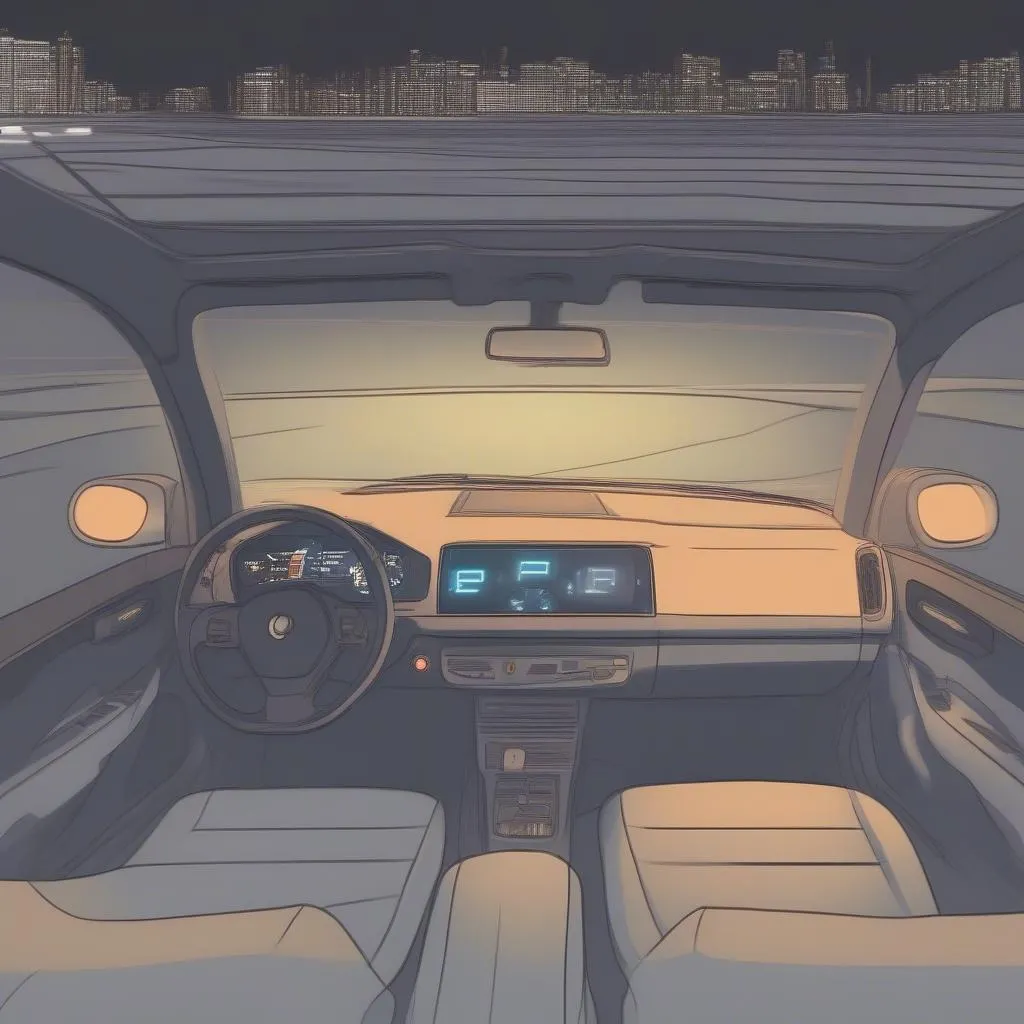Imagine this: you’re cruising down the highway, enjoying the open road, when suddenly your car’s battery light flickers on. Then, it dies. The engine sputters, the dashboard lights dim, and your heart sinks. What just happened? And more importantly, what should you do?
Don’t worry, you’re not alone. Many drivers experience this frustrating issue, and it’s often a sign of a serious electrical problem. We’ll break down the reasons why this happens, what to do when it does, and how to prevent it in the future.
Understanding the Problem
What Does the Battery Light Mean?
The battery light on your dashboard is not just a decorative ornament; it’s a vital warning system. When it illuminates, it means there’s a problem with your car’s electrical system and often indicates an issue with the battery itself.
Technical Explanation
The battery light is connected to a sensor that monitors the charging system’s performance. This system includes the alternator, battery, and wiring. When the alternator isn’t producing enough power to charge the battery or there’s a problem with the wiring, the sensor signals the battery light to illuminate.
The Economics of a Dead Battery
A dead battery is more than just an inconvenience. It can lead to costly repairs and tow truck fees. Even worse, it can leave you stranded in the middle of nowhere, especially if it happens at night or in a remote area.
What to Do When the Battery Light Comes On
First Steps:
- Pull over safely: Find a safe place to stop your car. Don’t try to limp it to a mechanic with the battery light on.
- Check your engine: Sometimes, the battery light is simply a false alarm. Give your car a few minutes to idle and see if the light goes out.
- Check your fuses: A blown fuse can also cause the battery light to come on. Check the fuse box under the hood or in the passenger compartment.
If the Battery Light Stays On:
- Contact a professional: Call your local mechanic or tow truck service. It’s essential to get professional assistance as a faulty battery can be dangerous.
- Avoid attempting DIY repairs: While you might be tempted to try and jump-start your car or replace the battery yourself, it’s best to leave it to the experts. A faulty battery can release dangerous fumes and electrocute you.
Common Causes of a Dead Battery While Driving
1. Alternator Failure
The alternator is the heart of your charging system. It’s responsible for converting mechanical energy from the engine into electrical energy to power the battery. A failing alternator can’t produce enough power to charge the battery, leading to a dead battery and the dreaded battery light.
2. Bad Battery Connections
Loose or corroded battery terminals can prevent the alternator from properly charging the battery. This is especially common in older cars or cars that are exposed to harsh weather conditions.
3. Worn-Out Battery
Even if your battery is new, it can still fail prematurely. Extreme temperatures, frequent short trips, and excessive electrical loads can accelerate the battery’s lifespan.
Additional Tips and FAQs
How to Prevent a Dead Battery
- Regularly check your battery terminals: Clean and tighten them to ensure a good connection.
- Avoid leaving your car idling for long periods: Idling drains the battery.
- Use your car regularly: If you don’t drive your car often, consider starting it up and letting it run for 15-20 minutes every week.
- Replace your battery every 3-5 years: This ensures optimal performance and longevity.
 Battery light on while driving: what to do?
Battery light on while driving: what to do?
What If My Car Won’t Start?
- Jump-start your car: If your car won’t start, you can try jump-starting it with a good battery.
- Use jumper cables: Connect the cables to the positive and negative terminals of both batteries, ensuring the connection is secure.
- Start the car: Start the donor car, then attempt to start your car.
- Important Note: Don’t leave the jumper cables connected for too long, as this can damage the batteries.
Can I Drive With the Battery Light On?
It’s generally not recommended to drive with the battery light on. This indicates a problem with your charging system, and continuing to drive can put additional strain on the battery and possibly cause further damage.
Can I Replace the Battery Myself?
While it’s possible to replace a battery yourself, it’s often a good idea to consult a professional mechanic, especially if you’re not comfortable with automotive repairs.
Where Can I Find a Good Mechanic?
It’s recommended to research and find a reputable mechanic specializing in European car models. They often have the experience and tools to diagnose and repair electrical problems.
What Should I Do If My Battery Light Stays On After Replacing the Battery?
If the battery light continues to illuminate after a new battery installation, the problem likely lies with the alternator or wiring.
Conclusion
A battery light coming on while driving is a serious warning signal. It’s essential to address the issue promptly to prevent further damage and avoid being stranded. Remember to always consult a professional mechanic for diagnosis and repair. And don’t forget to maintain your car’s battery regularly to ensure long-term performance.
If you’re looking for expert assistance with European car diagnostics and repairs, reach out to us at Tech Car USA! Our team of experienced technicians is available 24/7 to answer your questions and provide comprehensive solutions. Contact us via Whatsapp: +84767531508. We’re here to keep your European car running smoothly.
Don’t hesitate to leave a comment below if you have any further questions or experiences with battery light problems. Share your stories and help others learn from your experiences.